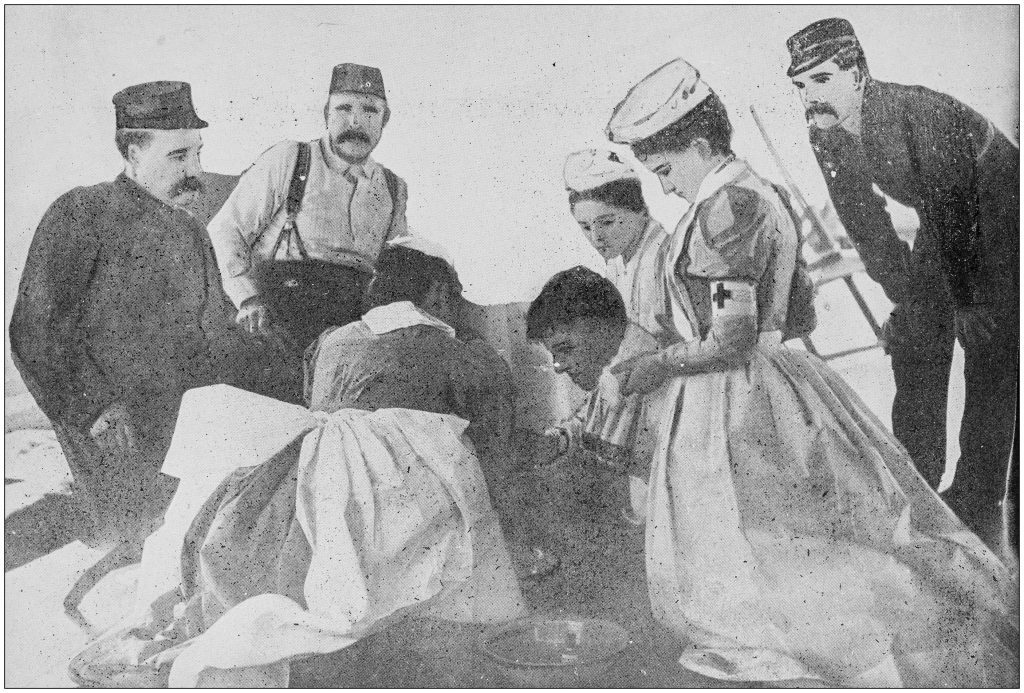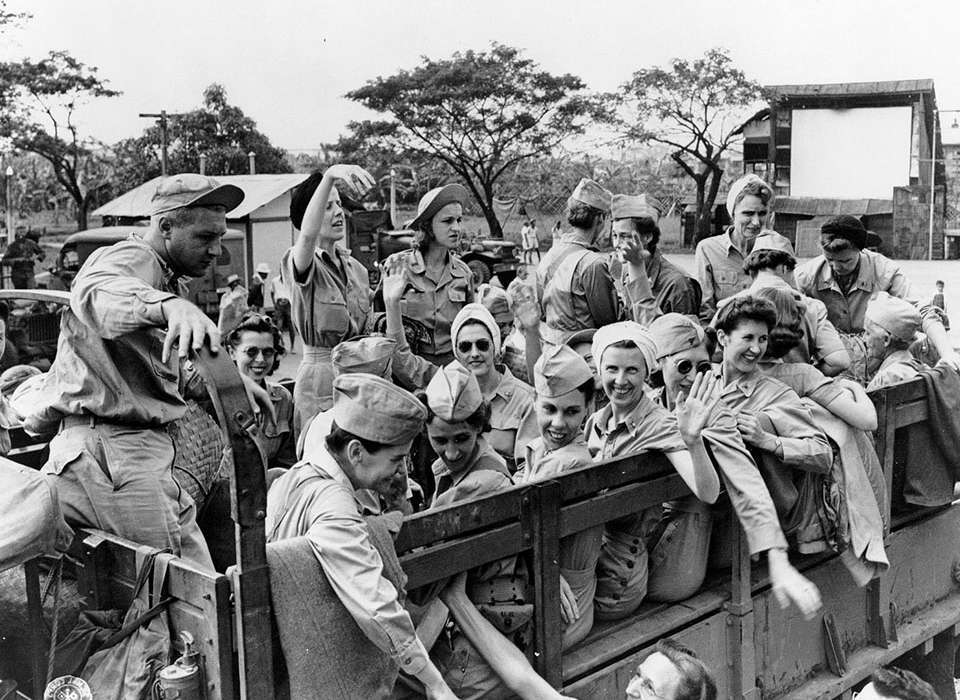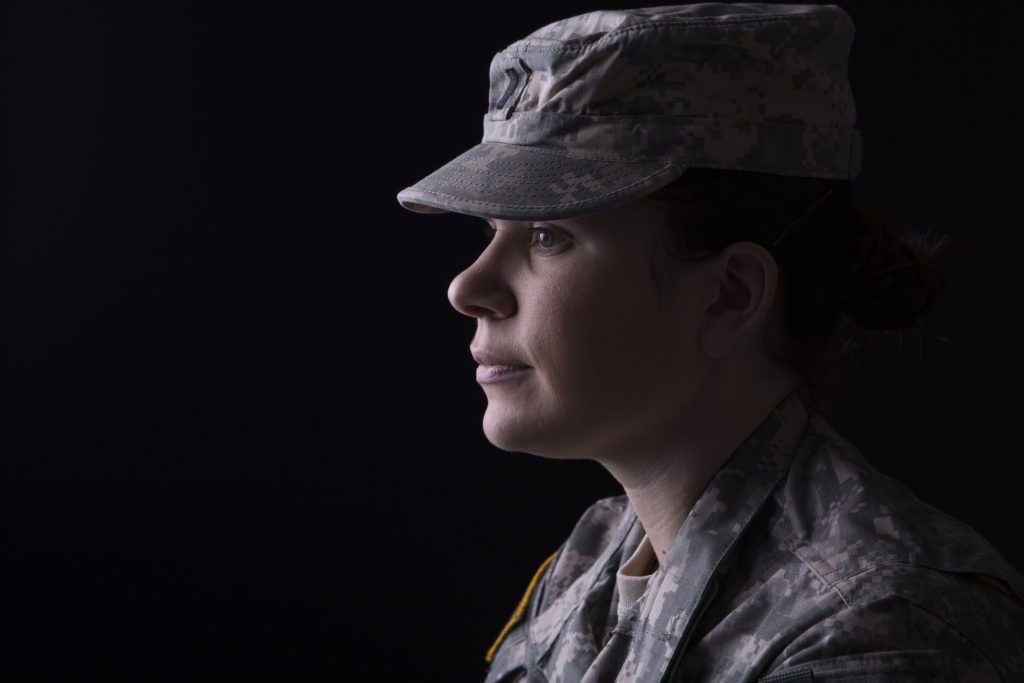The History of Women in the U.S. Military
With March being Women’s History Month, honoring and celebrating the women who have served our country seems more appropriate now than ever. And while women have always played significant roles during wartime, it wasn’t until after World War II that all the branches of the military formally allowed women to enlist. Policies and prejudices kept women from participating fully for decades–and yet, there were still women at every turn who left incredible impacts on our Armed Forces. The history of women in the U.S military has often been overlooked while remembering the service of American veterans. However, without our female service members, our nation would not be the same.

Civil War nurses tending to wounded soldiers.
WOMEN IN EARLY U.S. MILITARY HISTORY
In early American history, mothers, wives, sisters and daughters played integral roles in caring for the militias’ sick and wounded. Many also acted as cooks and seamstresses who maintained the units’ food, clothing and morale. For some, serving and supporting the soldiers from the outside was not enough.
THE REVOLUTIONARY WAR
During the Revolutionary War, Margaret Corbin became the first woman to receive a military pension. By disguising herself as a man, she was able to join her husband in the Battle of Fort Washington. There she became known as “Captain Molly” after heroically manning a cannon against the British. Unfortunately, enemy fire killed her husband and rendered her left arm completely useless. After her recovery, Corbin started working within the Invalid Regiment at West Point, where she served until her discharge in 1783.
It is believed that other women may have fought in the Revolutionary War under the same guise Corbin did. Historians now estimate that about 1,000 women followed in her footsteps during the Civil War, too. Although there were rules limiting a woman’s participation in the war, these heroines took the ultimate risk to serve and defend their country.
THE CIVIL WAR
While some infiltrated the battlefield, others became essential to the fight for life around the front lines. About 3,000 women–including the founder of the Red Cross, Clara Barton–served as nurses for the Union Army during the Civil War. Dorothea Dix, who had been a champion in improving hospital care for the mentally ill, made efforts as Superintendent of Army Nurses for the Union Army to improve training among nurses and to advocate for more opportunities for female nurses. Because she treated both Confederate and Union soldiers, many began to regard her as a bipartisan role model. Medical practitioners still consider her significant today, as she instilled an attitude of even-handed treatment among nurses.

Female U.S. Signal Corps Telephone Operators in Chaumont, France during WWI.
WOMEN IN THE 20TH CENTURY
In the 20th century, the role of women in the U.S. military evolved even further to include opportunities outside of the normal cleaning, cooking and nursing. With the arrival of WWI, there was a demand for more men on the battlefield than ever before. To adapt to this, the military started recruiting women to fill the clerical, laboratorial and mechanical positions left behind. The efforts of these servicewomen proved to be instrumental in winning WWI and WWII.
WWI
During WWI, women–who did not even have the right to vote yet–were working as translators, telephone and radio operators, torpedo assemblers, supervisors, camouflage designers, and fingerprint experts. These women, casually known as “Yeomanettes” in the Navy and “Hello Girls” in the Army, were valuable assets.
Unfortunately, women who had served with the Army returned home to find that the government had not granted them veteran status. The women who had acted as communication experts and “switchboard soldiers” during WWI were only considered civilian contractors. As such, they could not receive the benefits extended to soldiers. It was not until 1979 that Congress finally recognized the “Hello Girls” as veterans. For many of those female service members, the veteran status granted 60 years too late did them no good.

Army nurses liberated from POW camp in Santo Tomas, 1945.
WWII
During WWII, nearly 350,000 American women served in uniform, both at home and abroad. General Eisenhower felt that he could not win the war without the aid of the women in uniform.
One such woman in uniform was Army Col. Ruby Bradley, a nurse in the U.S. Army Nurse Corps, who was kept prisoner at an internment camp in the Philippines for 37 months. During her time as a prisoner, she stayed true to her calling as nurse and carried out 230 surgeries and 13 deliveries. Before her death in 2002, Bradley described the many risks she took to help other POWs around her. She regularly smuggled in morphine and other surgical tools from the camp hospital. On one occasion Bradley even anesthetized a pregnant woman with a tea strainer, gauze, and ether. Her ability to perform under extreme pressure and in harsh conditions is a testament of the ingenuity of servicewomen. Bradley was one of 77 nurses who were taken as POWs during WWII.
KOREAN WAR & VIETNAM WAR
After WWII, President Truman signed the Women’s Armed Services Integration Act, which officially allowed women to serve as full members in all branches of the Armed Forces. However, there were still restrictions in place that acted as obstacles for many female service members. Policies still limited the number of women who could serve in each branch to 2%. Additionally, the opportunity for women to serve in combat positions was still out of the question. Regardless, the Korean War provided the platform for women to advance into new roles such as military police officers and engineers. 120,000 women served in active duty positions during this period. Just a few years later, about 265,000 American women served in the Vietnam War.
WOMEN IN RECENT MILITARY HISTORY
Over the past four decades, the military has changed in significant ways. As a result, women in the U.S. military are becoming increasingly more involved in national defense. In 1994, Bill Clinton rescinded the “Risk Rule,” which meant women could serve in all positions except for direct ground combat roles. With this shift, women have been able to establish themselves as fighter pilots, generals, and rescue swimmers. Army Sgt. Leigh Ann Hester was even awarded the Silver Star for her bravery during an enemy ambush in Iraq in 2005, which made her the first female soldier to receive the award for direct combat action.

Nearly 1 in 4 U.S. servicewomen reports being sexually assaulted in the military.
As the military abandons discriminatory policies, women have proven to be just as capable as men in the most demanding environments. The number of women serving continues to grow, with more than 300,000 women having served in Iraq and Afghanistan since 9/11, and more than 9,000 having earned Combat Action Badges. Unfortunately though, the integration of women in these spaces has negatively affected some female service members. Nearly one in four U.S. servicewomen reports that they have been sexually assaulted in the military. With all the progress made, there still survives a pervasive culture in which women are taken advantage of.
While sexual assault in the military remains a problem, there is hope. Programs like Charlie Mike are aware of the troubling reality and provide support to female veterans who need it. By addressing the issue and facilitating conversation, Charlie Mike gives victims a space for recovery.
Women have changed the military for the better over the past 200 years, and with that, they deserve our support. As these women warriors continue to overcome obstacles on and off the battlefield, let’s remember to honor all that they’ve done–even after Women’s History Month ends. The history of women in the U.S. military is still being written, and there will be many more stories to tell.




